Aging Well At Home — Even With COPD

Aging Well At Home — Even With COPD
Aging well at home has never been easier.
Services like AgeRight Care at Home help you get back to the life you love after you’ve had surgery or an accident or just need some friendly assistance with meal prep, housekeeping and medication management.
That help is especially welcome when conditions like COPD make moving around your home difficult, even painful.
And because COPD is on the rise, it’s important for all of us to know what it is, recognize the early symptoms, the causes, and how to live with it.
Chronic obstructive pulmonary disease or COPD is a variety of lung diseases that make breathing difficult, due to the inflammation of the lungs. COPD affects almost 330 million people in the world and in a few years is expected to be one of the leading causes of death.
The culprit? Smoking and exposure to other pollutants, but even nonsmokers can get COPD.
While there’s no cure, we can fight back with knowledge. So, in this blog, let’s get your top questions about COPD answered so you can get on to living your best life!
4 Ways to Fight COPD
#1 How do I avoid getting COPD?
- Don’t smoke, anything.
- Stay clear of secondhand smoke, from cigarettes, cigars, vapes (e-cigars, e-cigarettes), hookahs, marijuana. Smoke combustion from all of these contain a brew of similar carcinogens and irritants as cigarette smoke. There is no safe smoke.
- Avoid other pollutants like dust, pollens and wildfire smoke.
- During pollen and wildlife season, stay inside, breathing filtered air. Here are Consumer Reports 2023 recommendations for best air filters.
#2 How do I recognize the symptoms of COPD?
Discomfort and pain. Imagine feeling like your lungs are tightly constricted, unable to adequately take in and push out air. That’s one of the more obvious and painful red flags for COPD. Here are more:
- Chest tightness
- Fatigue
- Breathlessness
- Wheezing
- Chronic cough
- Inability to engage in normal activities like enjoying a walk or engaging with friends and family.
- Anxiety that comes from the emotional toll these physical symptoms are having on your body and mind.
If you feel any of those symptoms, contact your doctor immediately and ask for a COPD test, called a spirometry. It’s fast and simple. Using a mouthpiece, you take in your biggest breath possible then blow that breath out as hard as you can. Check out this video to see what you can expect. And learn more about identifying COPD in this Marquis blog.
#3 If I’m diagnosed with COPD, what is my treatment?
Along with your doctor’s recommendations, you can adopt the Marquis Deep Breathing Program, easy steps developed by our own healthcare professionals. Get started right away and do it daily.
- Precisely take your daily medications including the metered dose inhalers. These devices can be expensive and easy to use the wrong way. Also, take charge and ask your provider to review all your medications once again. Here’s what to ask:
- What are my medications?
- Do any of them interfere with one another?
- Am I taking them at the right dose and right time of day/night?
- Do I need a tracking system like med boxes?
- Exercise. That comfy recliner or couch is not your friend. Too much rest is the green light for mucus to move into a nice, warm environment – our lungs – settle in and grow bacteria. Movement shakes things up! Your doctor or therapist can suggest simple exercises or walking plans that give you time to rest between movements. You can also check out some of our Marquis fitness recommendations on fitness and balance.
- Eat a Heart Healthy Diet. Obesity and heart disease often accompany COPD. The colorful, Mediterranean diet is best. Increase your proteins and good fats as you age. And lower carbohydrates and Always check with your doctor before making any changes in your diet.
- Avoid Infections:
- Double up on handwashing. COPD patients are more vulnerable to disease and infection. 20 seconds –– that’s how much time it takes to kill germs. Don’t want to count? Just sing Happy Birthday to yourself, two times.
- Stay up to date on your vaccinations. For those over 60, add the RSV (Respiratory Syncytial Virus) vaccine. Many rehospitalizations (where there are plenty of germs) for COPD patients are due to colds, flues and COVID. All affect your lung health. Stay away from anyone who is sick and don’t be afraid to use your masks again.
#4 What does it mean to know my COPD “Zone”?
If you have COPD, it’s important to pause twice a day and check how you’re doing. You can identify them in colors in this COPD Action Plan but here are the definitions of each zone.
- Green Zone
Here’s where you want to stay. This is the goal. In the green zone, symptoms are under control. You’re sleeping well. You aren’t experiencing shortness of breath or coughing. - Yellow Zone
This is the beginning of the warning period. Symptoms include increased coughing, shortness of breath, swelling of the ankles, less energy, cold symptoms, feeling the need to use your rescue inhaler (separate from the regular inhaler) to quickly open the lungs. If you’re in the yellow zone, call your doctor immediately and provide an update on your condition. Your doctor may order some lab work, chest x rays or change your inhaler and prescribe antibiotics. - Red zone
Symptoms in the red zone include significant shortness of breath, inability to perform basic activities, the rescue inhaler no longer helps, there’s chest pain, fever and even coughing up blood. This may signal a secondary infection from the mucus sitting in the lungs. This is life threatening. Call 911. Go to the emergency room.
Finally, one of the best ways to stay healthy if you have COPD is to stay up to date on your vaccinations. Join us next month, when we cover all you need to know about which vaccines and when to get them. Happy Thanksgiving!
Recent Posts
Aging Well At Home — Even With COPD
24th Nov 2023Building Balance – Part Two
18th Oct 2023Building Balance – Part One
21th Sep 2023© 2025 AgeRight Care at Home | Privacy Policy



